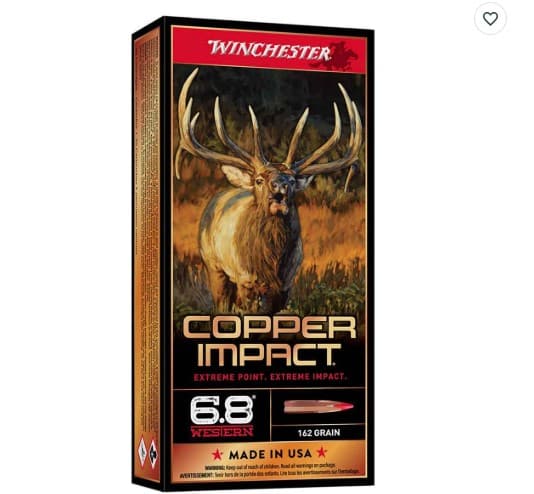The race for new space on the ammunition shelves at your favorite gun shop is a fast and furious one, with manufacturers launching new cartridges each year with the hopes of grabbing a small piece of this big pie. The long-range market has been particularly lucrative recently and with Hornady’s launch of the 6.5 PRC in 2018 and the 7 PRC in in 2022, it didn’t leave much room for Winchester/Browning, but they found a spot right in the middle with the 6.8 Western. At one time, metric cartridges were all but a guarantee of failure in the American cartridge market but with the interest in the long-range game, came an expectation of metric cartridges. Plain old imperial measurements just weren’t as good in consumers’ minds. And thus, was born a new .277 caliber cartridge, the 6.8 Western.
What Is the 6.8 Western?
It is based on Winchester’s 270 WSM, arguably the most successful of the Winchester Short Magnum line of cartridges. In fact, it really isn’t that different. The case was shortened slightly from 2.100 inches to 2.020 inches, and the shoulder is set back 0.081 inches, but the overall length of the cartridges remains the same. This was done to allow the use of heavier bullets with a higher ballistic coefficient in the 6.8 Western while still meeting the specifications for a short-action cartridge. Heavier-weight bullets were the one limiting factor for 270 cartridges, with 145 grains being at the upper limit before the 6.8 Western came on the scene. The 6.8 Western is capable of handling bullets up to 175-grain, but the real magic isn’t in the cartridge but rather in the rifles chambered in it.
6.8 Western Ballistics & Twist Rates (Why 1:8 and 1:7.5 Matter)

Prior to the 6.8 Western, most 270s were equipped with barrels with a 1:10 or 1:9 twist and were unable to stabilize heavier .277 bullets. Winchester and Browning rifles are equipped with a 1:8” and 1:7.5” twist, respectively, to help stabilize these longer, heavier bullets. You could accomplish the same thing by re-barreling a 270, but the smart thing that Winchester did was ensure the 6.8 Western fit into a short action, a desirable trait for western mountain hunters.
6.8 Western Ammo vs. 270 WSM: Key Differences
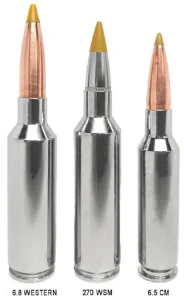 Like it’s parent cartridge, the 270 WSM, the 6.8 Western does post some impressive velocities, with the 165- and 170-grain bullets leaving the muzzle at over 2,900 feet per second (fps) and the 175-grain at over 2,800 fps. This is a proprietary cartridge for Winchester and Browning, but more recently, a handful of other niche manufacturers are chambering rifles in it. Ammunition is still primarily limited to Winchester and Browning, with a couple of niche manufacturers also offering ammunition. Bullets, too, are a bit limited for handloaders. Proprietary cartridges have been a kiss of death for many newcomers, and to this point, the 6.8 Western is holding its own in the marketplace, but time will tell if it survives in the long run.
Like it’s parent cartridge, the 270 WSM, the 6.8 Western does post some impressive velocities, with the 165- and 170-grain bullets leaving the muzzle at over 2,900 feet per second (fps) and the 175-grain at over 2,800 fps. This is a proprietary cartridge for Winchester and Browning, but more recently, a handful of other niche manufacturers are chambering rifles in it. Ammunition is still primarily limited to Winchester and Browning, with a couple of niche manufacturers also offering ammunition. Bullets, too, are a bit limited for handloaders. Proprietary cartridges have been a kiss of death for many newcomers, and to this point, the 6.8 Western is holding its own in the marketplace, but time will tell if it survives in the long run.
Let’s take a look at a few of the more popular rifles chambered in 6.8 Western.
Best 6.8 Western Rifles in 2025
Winchester M70 Extreme Tungsten MB

Winchester XPR Western Mossy Oak

Winchester Renegade Long Range SR

Browning X Bolt 2 Mountain Pro, Carbon Fiber

Browning aimed the Mountain Pro Carbon squarely at the serious mountain hunting crowd with its carbon-fiber stock and carbon barrel. It weighs in at a scant six pounds, three ounces. This is a true lightweight mountain rifle, and ounces were shaved in several areas, including the spiral-fluted bolt and the use of an aluminum bolt handle. This rifle comes with a threaded Recoil Hawg muzzle brake to tame this lightweight rifle down when using the heavy-weight bullets in this 1:7.5 twist, 24-inch barrel, which handles them with ease. The stock features an adjustable comb and has quick-detach sling sockets and comes standard with a picatinny rail on the underside of the fore stock for easy accessory mounting—perfect if you want to attach a Picatinny bipod for added stability. It features an easily adjustable trigger and has a hinged floor-plate magazine that holds three rounds. There’s a lot to like about this X Bolt 2 Mountain Pro, Carbon Fiber from Browning, but be prepared to dig deep into your wallet for all these features. Buy at Sportsman’s Warehouse
Browning X-Bolt 2 Hunter Composite
For the hunter on a budget, Browning’s X-Bolt 2 Hunter Composite is still loaded with features that serious western hunters demand, but at a more affordable price. Like all X-Bolt 2 rifles, the Hunter Composite is built on the new receiver design. The bolt is spiral fluted to shave off a bit of weight, and the Hunter Composite comes in at a reasonable six pounds, 10 ounces, ensuring it’s at home in the mountains and foothills. The composite stock features an adjustable comb and length of pull. The 24-inch barrel has a 1:7.5 twist, designed for the heaviest .277 caliber bullets. The DLX Trigger is a three-lever design that comes preset from the factory at 3.5 pounds but is consumer adjustable down to three pounds. The Hunter Composite comes standard with a threaded radial muzzle brake. For the budget-conscious hunter who wants to shoot the heaviest .277-caliber bullets, the Browning X-Bolt 2 Hunter Composite is definitely worth a look. Buy at Sportsman’s Warehouse
Browning X-Bolt 2 Hell’s Canyon Max LR

Fierce CT Rival XP
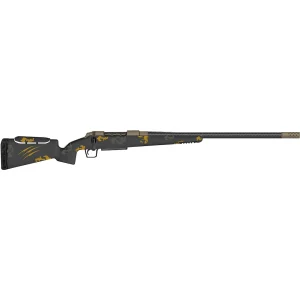 Fierce Firearms, a semi-custom rifle builder out of Utah, was one of the first non-Browning or Winchester rifles chambered in the 6.8 Western. Their Twisted Rival FP comes in under $2,000, impressive for a semi custom rifle. It comes standard with a spiral-fluted stainless barrel in your choice of length and twist, and a threaded radial muzzle brake is included. The 100% carbon-fiber stock comes with an adjustable comb and has flush-mounted QD swivel sockets and a front Picatinny rail for bipod mounting. It comes with a hinged-floorplate magazine that holds three rounds. For a rifle with a steel barrel, the CT Rival XP weighs in at a scant 5.8 pounds with the optional titanium action and a reasonable 6.3 pounds with the standard steel action. This is definitely a rifle worthy of consideration for the serious mountain hunter. Buy at Academy Sports
Fierce Firearms, a semi-custom rifle builder out of Utah, was one of the first non-Browning or Winchester rifles chambered in the 6.8 Western. Their Twisted Rival FP comes in under $2,000, impressive for a semi custom rifle. It comes standard with a spiral-fluted stainless barrel in your choice of length and twist, and a threaded radial muzzle brake is included. The 100% carbon-fiber stock comes with an adjustable comb and has flush-mounted QD swivel sockets and a front Picatinny rail for bipod mounting. It comes with a hinged-floorplate magazine that holds three rounds. For a rifle with a steel barrel, the CT Rival XP weighs in at a scant 5.8 pounds with the optional titanium action and a reasonable 6.3 pounds with the standard steel action. This is definitely a rifle worthy of consideration for the serious mountain hunter. Buy at Academy Sports
Fierce Carbon Rival XP
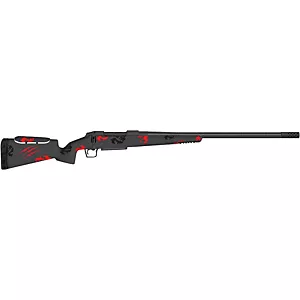 For shooters who prefer a carbon-fiber barrel, the Carbon Rival XP from Fierce is a solid option, and as it is a semi-custom rifle, consumers can choose barrel length and twist just as with the steel-barreled version. A NIX side port muzzle brake is included. It comes with a 100% carbon-fiber stock with an adjustable comb and has flush mounted QD swivel sockets and a front Picatinny rail for bipod mounting. The Carbon Rival has a detachable box magazine that holds three rounds. Serious mountain hunters will be impressed with the weight, at 5.8 pounds with the optional titanium action and 6.3 pounds with the standard steel action, with a 22-inch barrel. For a rifle with both carbon fiber stock and barrel, it’s well priced and definitely worth a look if you are in the market for a rifle chambered in 6.8 Western. Buy at Academy Sports
For shooters who prefer a carbon-fiber barrel, the Carbon Rival XP from Fierce is a solid option, and as it is a semi-custom rifle, consumers can choose barrel length and twist just as with the steel-barreled version. A NIX side port muzzle brake is included. It comes with a 100% carbon-fiber stock with an adjustable comb and has flush mounted QD swivel sockets and a front Picatinny rail for bipod mounting. The Carbon Rival has a detachable box magazine that holds three rounds. Serious mountain hunters will be impressed with the weight, at 5.8 pounds with the optional titanium action and 6.3 pounds with the standard steel action, with a 22-inch barrel. For a rifle with both carbon fiber stock and barrel, it’s well priced and definitely worth a look if you are in the market for a rifle chambered in 6.8 Western. Buy at Academy Sports
Christensen Arms Ridgeline FFT

Seekins Precision Havak Element
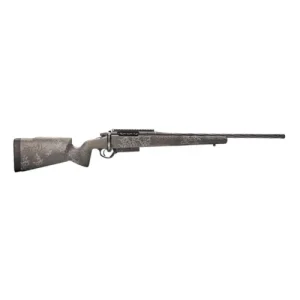 Seekins Precision is now offering its popular Havak Element in 6.8 Western. This is another true lightweight, weighing in at just 5.5 pounds. It comes with a 21-inch stainless steel, spiral fluted barrel with a 1:8 twist. The barrel is threaded for a muzzle brake or suppressor (not included). The trigger is user-adjustable and can be turned down to 2.5 pounds. The stock is carbon fiber but offers no adjustment. One cool feature is that it comes standard with a 20 MOA rail and bubble level for precision long-range shooting. There is also an integrated Picatinny rail in the forestock for bipod mounting. The Havak Element will definitely appeal to serious mountain hunters, and while the 21-inch barrel helps keep weight down, it will also reduce velocity slightly. Buy at Scheels
Seekins Precision is now offering its popular Havak Element in 6.8 Western. This is another true lightweight, weighing in at just 5.5 pounds. It comes with a 21-inch stainless steel, spiral fluted barrel with a 1:8 twist. The barrel is threaded for a muzzle brake or suppressor (not included). The trigger is user-adjustable and can be turned down to 2.5 pounds. The stock is carbon fiber but offers no adjustment. One cool feature is that it comes standard with a 20 MOA rail and bubble level for precision long-range shooting. There is also an integrated Picatinny rail in the forestock for bipod mounting. The Havak Element will definitely appeal to serious mountain hunters, and while the 21-inch barrel helps keep weight down, it will also reduce velocity slightly. Buy at Scheels
FAQ – 6.8 Western Cartridge
How does 6.8 Western compare to 270 WSM/270 Win?
Similar case family but slightly shorter with faster twists, allowing 165–175 gr bullets; better long-range performance than 270 Win and more heavy-bullet friendly than 270 WSM.
Typical bullet weights & twist rate?
165–175 grains; most rifles use 1:8″ (Winchester) or 1:7.5″ (Browning) to stabilize long .277 bullets.
What velocities can I expect?
Roughly 2,800–2,950 fps with 165–175 gr factory loads from 24″ barrels.
Effective hunting range?
Commonly 600–800 yards for ethical shots in capable hands with appropriate loads and dope; many hunters keep it inside 500.
Is recoil manageable?
Recoil is moderate—more than 6.5 PRC, a bit less than many 7mm magnums—often tamed with brakes/suppressors. See chart above.
Barrel length sweet spot?
22–24″ balances velocity and handling; shorter lightweight builds sacrifice some speed.
Is 6.8 Western Ammo available?
Primarily Winchester/Browning with growing niche options; not as ubiquitous as legacy .270/6.5 CM rounds.
What game is it best for?
Excels on deer, antelope, and elk; suitable for larger western big game with proper bullets and shot placement.
The jury is out on whether the 6.8 Western is here to stay or not. Still, new life is being breathed into it with new manufacturers coming on board with rifle models. Barnes and Choice Ammunition are offering factory-loaded ammunition for this cartridge. Did we really need a new 270 cartridge? Likely not, but it’s creating buzz in the industry, and space near the 7mm caliber cartridges. the fact that Winchester/Browning was able to fit it in a short action was brilliant on their part. For serious long-range shooters, it’s definitely worth a look.
Per our affiliate disclosure, we may earn revenue from the products available on this page. To learn more about how we test gear, click here.



